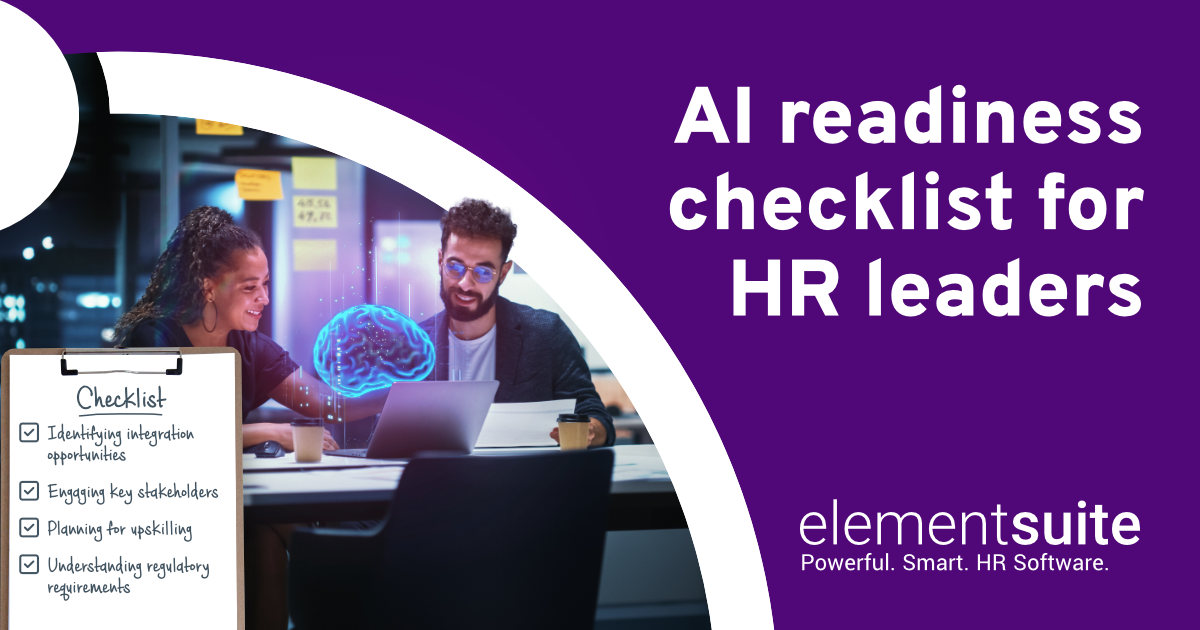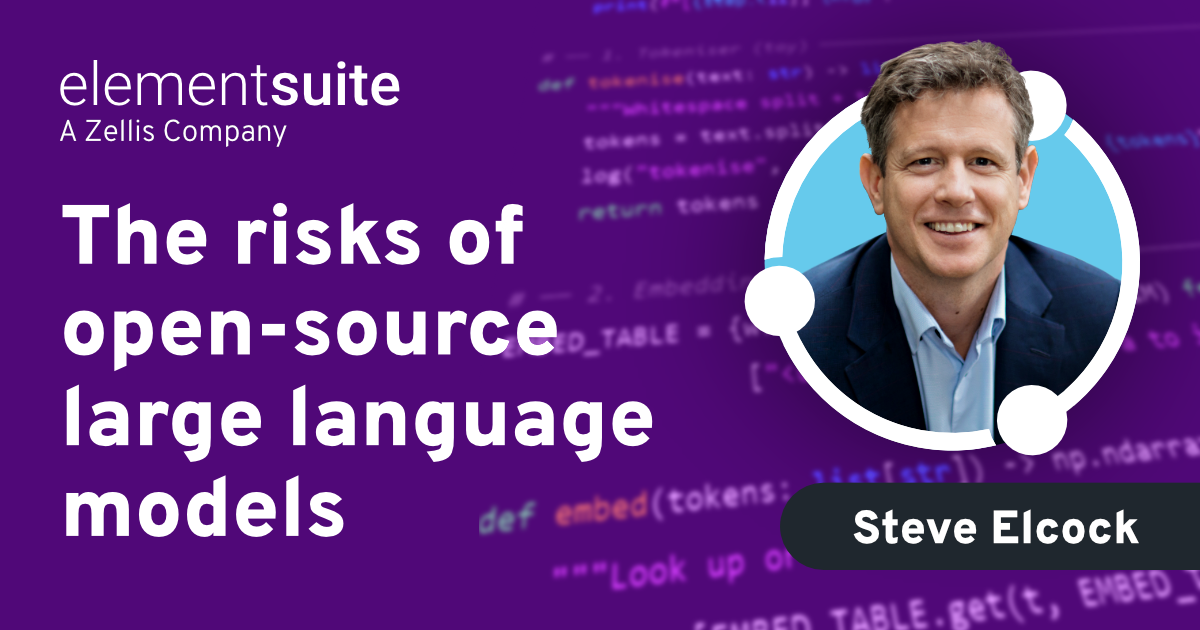Reflecting on the past year, AI in HR has been the buzzword on every HR leader, business owner, and employee’s lips. It has taken front and centre stage in every conference, webinar and business strategy meeting.
In 2023, over 50% of HR professionals said they were using AI in some form or another. Come 2024, Gartner research found that 34% of HR leaders are exploring potential use cases for generative AI.
Organisations aren’t just jumping on the AI train because it’s the shiniest tool everyone’s talking about. It has real, tangible benefits to task performance and accuracy that can revolutionise HR processes and drive business success.
AI can help save you time and enhance efficiency by augmenting your decision-making processes. It can also reduce unconscious bias in recruiting and talent management, leading to a more diverse and inclusive workplace.
However, leaping into AI without proper preparation or understanding of its potential risks is like diving into a pool without knowing how to swim. As an HR leader, it is crucial to understand AI readiness and its implications for your organisation clearly.
So, before you start implementing AI solutions, here’s a checklist to ensure that you reduce the likelihood of errors or omissions.
Assessing the current state
Before initiating an employee engagement initiative, you assess the current state of the organisation, its culture, and its processes. The same should be applied when incorporating AI into your HR processes. You need to assess the initial state of HR processes and systems. This involves an extensive review of current practices, from recruitment and talent development to workforce planning and employee engagement.
You could start by benchmarking your HR metrics against industry standards and identifying areas of improvement. Is your time to fill positions higher than the industry average? Do you have a high voluntary turnover rate? Are there any recruitment or performance management practices that are consistently ineffective?
These are some questions to consider while evaluating the current state of HR. But more importantly, you need to ask yourself about the organisation’s goals. Is the current state of HR addressing your most pressing business challenges?
The answers to these questions will help you establish a baseline and identify areas that could benefit from AI implementation.
At the end of the day, you want to implement AI that will add value to your business, not just because you found out that your competitor is using it too.
To help you along the way, we have created an HR Heatmap. This tool will help you assess the current state of HR processes and identify areas for improvement, including a section on AI. To access our HR toolkit, click here.
Identifying use cases
Once you have assessed the current state of HR processes and systems, the next step is identifying where AI can be incorporated effectively within your organisation.
Look at your whole HR life cycle, from recruitment and onboarding to employee development and performance management. Is there a high volume of repetitive tasks that take up significant time? For example, screening resumes or scheduling interviews. These are areas where AI can streamline and automate processes, freeing up HR professionals’ time to focus on higher-value tasks.
Identifying AI use cases opportunities will help you determine the right AI solutions for your organisation, avoiding unnecessary or ineffective implementations.
Engaging key stakeholders
Incorporating AI into HR processes is not just about technological implementation. It’s about strategic alignment with your organisation’s core objectives and the people who drive its success. Engaging key stakeholders is crucial in this process to obtain consent and secure necessary resources and support for testing.
Think to yourself, who are the key stakeholders in your organisation when it comes to HR processes? Who will be impacted by AI integration? And how can you involve them in the process to ensure their buy-in and commitment?
Engaging these stakeholders from the beginning and throughout the process will help build understanding, trust, and acceptance of AI in HR. It also allows for their input and feedback to be incorporated into the decision-making process, ensuring that the AI solutions implemented and the user experience are effective and beneficial for all involved.
Communicating the benefits of AI to all stakeholders
Each stakeholder will have their own concerns and questions regarding AI implementation. It’s essential to communicate the benefits of AI clearly and effectively to address any potential resistance or hesitation.
Start by highlighting the potential impact on individual roles and responsibilities – will it free up time for more meaningful work? Will it enhance decision-making capabilities? How will it benefit employee experience and engagement?
Emphasise how AI can support business goals and contribute to overall organisational success. And be transparent about any potential risks and address concerns openly. This will help build trust and confidence in the AI solutions being implemented.
But don’t just communicate the benefits once – continue to provide updates and progress reports throughout the implementation process and after its completion. Ask for their feedback and suggestions for improvement, and be open to considering them in future iterations of the AI solutions.
Identifying skill gaps within the HR team
Implementing AI in HR also means that the skills and competencies required within the HR team will shift. It’s essential to identify potential skill gaps and proactively address them to ensure the successful integration of AI into HR processes.
Consider assessing your HR team’s current skills and capabilities. What technical skills do they have? Which ones will they need to use and manage AI tools effectively? Are there areas where you can upskill?
To effectively identify and address skill gaps within your HR team, consider the following steps:
- Utilise Machine Learning for Skill Analysis: Implement machine learning algorithms to analyse talent data systematically. This approach can reveal the current competencies within your HR team, highlighting areas where skill gaps are evident and predicting future skill requirements.
- Identify Key Roles and Responsibilities: Break down the HR function into key roles and responsibilities. For each role, use the insights gained from machine learning analysis to list the requisite skills and competencies. This exercise will help you pinpoint specific skill gaps related to each HR process, ranging from recruitment and employee engagement to performance management and analytics.
Planning for upskilling or reskilling programs
Based on the identified skill gaps, design targeted learning upskilling and reskilling programs for your HR team. These programs should be based on your talent assessments and tailored to equip your team with the necessary skills to leverage AI tools and technologies in their daily tasks effectively.
This should also go beyond the four walls of the HR department. Involve all stakeholders, including employees and leadership, to ensure everyone aligns with the skills required for successful AI implementation.
Remember, everyone has unique learning styles, so make sure to provide various learning opportunities and resources. This could include a mix of in-house training sessions, online courses, and workshops led by external experts.
Most importantly, encourage a culture of continuous learning within the organisation. Regularly update your skills taxonomy to adapt to the evolving AI landscape and identify any new skill gaps that may arise. This will ensure that your organisation remains at the forefront of AI readiness, ready to embrace future advancements and drive organisational success.
Understand the law and regulatory requirements
Finally, understand the legal and regulatory requirements surrounding AI implementation in HR. This includes data privacy laws, ethical considerations, and potential bias in algorithms.
Take, for instance, the General Data Protection Regulation (GDPR). This imposes strict rules on the processing of personal data. Therefore, you must ensure that AI systems process employee or candidate data lawfully, fairly, and transparently, uphold individuals’ rights, and maintain data security.
Then we also have the Equality Act 2010, which prohibits discrimination in employment based on protected characteristics. Thereby, AI tools used in recruitment, performance management, or other HR processes must be scrutinised for bias to prevent indirect discrimination.
With all this in mind, it is highly recommended that an Ethics Committee be established to oversee the ethical implications of AI implementation in HR, consider the potential impact on employees, and ensure compliance with relevant laws and regulations.
This Ethics Committee should consist of members from various departments, including HR, Legal, IT, and Data Privacy. Its role will be to review the implemented AI tools, address potential ethical concerns or bias in algorithms, and ensure that all necessary legal requirements are met.
Final thoughts
Incorporating AI into HR processes can bring numerous benefits to organisations, including increased efficiency, data-driven decision-making, and improved employee engagement.
By following the steps outlined in this guide, your organisation can prepare for AI adoption in HR and position itself for future success. However, remember to regularly evaluate and update your approach as the AI landscape continues to evolve.
With the right skills, planning, and considerations, AI can revolutionise the HR function and drive your organisation’s success forward. So start preparing now and stay ahead of the curve.




